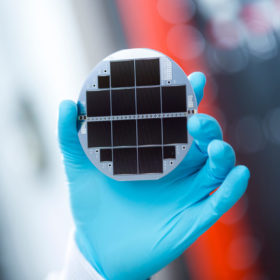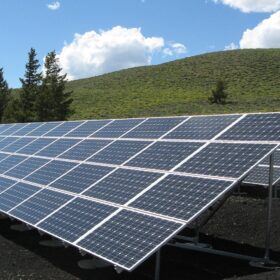The long read: The time is right
Kaco is launching a mass-produced string inverter with silicon carbide switches onto the market following 10 years of discussion about the technology within the industry. In the 100 kilowatt plus segment, the technology produces small, lightweight devices with few components.
The long read: Materials matter
As problems with component failure have already laid bare, there is a clear need for contract clarity at every stage of a PV project, from material and component sourcing to power purchase and operations agreements. Here, pv magazine investigates a little covered issue for module buyers, which could threaten insurance coverage and the overall success of a project further down the line.
The long read: Flashing key for bifacial value
As new cell and module concepts move into large-scale production, and efficiencies are pushed ever higher, manufacturers of flash testing equipment must innovate to ensure their tools can provide reliable measurements, and cope with ever expanding production throughput. The expansion of bifacial technology beyond niche applications in particular raises new issues for flash testing standards. pv magazine spoke with several flasher manufacturers to shed light on the latest developments in this segment.
The long read: Getting rolling
The first companies are demonstrating that today it can be worthwhile commercially to back electric vehicles in combination with solar generation and storage. Particularly in the case of public charging stations, solar power used for electric vehicle charging could become the basis for a profitable operator model in the future.
German researchers achieve 25.5% efficiency for perovskite tandem solar cells
The research team was able to improve the cell efficiency by 2.1%. The cell silicon layer was etched on the back-side, while a a polymer light management (LM) foil was applied to the front-side of the device.
The long read: Cutting down on copper
Controllable, distributed battery storage systems can help avoid bottlenecks in power distribution networks. That reduces the cost of grid expansion, but to turn this use of storage systems into a business model, a number of conditions still have to be met.
The weekend read: Getting rolling
The first companies are demonstrating that today it can be worthwhile commercially to back electric vehicles in combination with solar generation and storage. Particularly in the case of public charging stations, solar power used for electric vehicle charging could become the basis for a profitable operator model in the future.
KfW signs €200 million loan agreement with REC for rural PV development
In 2015, Germany and India signed a deal outlining plans by Germany to provide loans amounting to €1 billion for the development of Indian solar PV plans. Loans are provided through development bank, KfW. On the Indian side, REC issues low-interest loan schemes in conjunction with private sector participation to disperse the funds.
Minister outlines plan to become global renewables leader, at Intersolar Europe
Underlining India’s commitment to becoming the global renewable energy leader, Shri Anand Kumar, secretary of the Ministry of New and Renewable Energy, said the country plans 500 GW of capacity by 2030. He also underlined plans to become a solar and storage manufacturing hub; and said the International Solar Alliance needs to widen its membership.
Germany’s Fraunhofer ISE announces 33% efficiency for multi-junction solar cell
Together with Austrian equipment manufacturer EVG, Fraunhofer ISE has achieved an efficiency of 33.3% on a multi-junction solar cell. The highlight of the cell is the ultra-thin II-V semiconductor layer. However, it will be a few years before mass production is possible.















